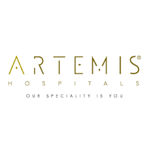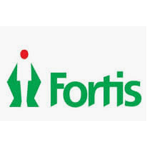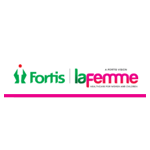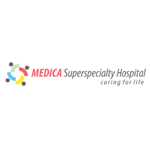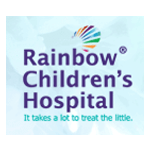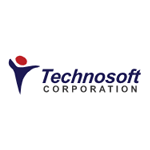- Home
- About Us
- Courses
- NSHM Business School
- BBA (Bachelor of Business Administration)
- BBA – Hospital Management
- BBA – Global Business
- BBA – Sports Management
- BBA – Accountancy, Taxation & Auditing
- BBA – Accountancy, Taxation and Auditing + BSE Certification
- BBA – Banking & Financial Services
- MBA (Master of Business Administration)
- Executive MBA
- MHA (Master of Hospital Administration)
- NSHM Institute of Health Sciences
- Bachelor of Pharmacy
- Bachelor of Pharmacy (Lateral)
- Bachelor of Optometry
- B.Sc. – Psychology
- B.Sc. – Dietetics and Nutrition
- B.Sc. – Medical Lab Technology
- B.Sc. – Radiology & Medical Imaging Technology
- B.Sc. – Critical Care Technology
- B.Sc. – Yoga
- Master of Optometry
- Master of Optometry (BL)
- Master of Pharmacy – Pharmacology
- Master of Pharmacy – Pharmaceutics
- Master of Public Health
- Master of Public Health (BL)
- M.Sc. – Clinical Psychology
- M.Sc. – Dietetics and Nutrition
- M.Sc. – Medical Lab Technology
- M.Sc. – Radiology & Imaging Technology
- M.Sc. – Yoga
- M.Sc. – Yoga (BL)
- NSHM Design School
- NSHM Institute of Computing & Analytics
- NSHM Institute of Engineering & Technology
- B. Tech. – Mechanical Engineering
- B. Tech. – Mechanical Engineering (Lateral)
- B. Tech. in Civil Engineering
- B. Tech. – Civil Engineering (Lateral)
- B. Tech. – Computer Science Engineering
- B. Tech. – Computer Science Engineering (Lateral)
- B. Tech. – Electronics & Communication Engineering
- B. Tech. – Electronics & Communication Engineering (Lateral)
- B. Tech. – Artificial Intelligence and Machine Learning
- B. Tech. – Artificial Intelligence and Machine Learning (Lateral)
- B. Tech. – Electrical Engineering
- B. Tech. – Electrical Engineering (Lateral)
- B. Tech. – Data Science
- B. Tech. – Data Science (Lateral)
- NSHM Institute of Hotel & Tourism Management
- BBA – Aviation Hospitality Services and Management
- BBA – Travel & Tourism Management
- B.Sc. – Culinary Science
- Bachelor of Hotel Management & Catering Technology
- B.Sc. – Hospitality & Hotel Administration
- Master of Tourism & Travel Management
- Master of Tourism & Travel Management (BL)
- M.Sc. – Hospitality Management
- M.Sc. – Hospitality Management (BL)
- NSHM Institute of Nursing
- NSHM Media School
- NSHM Institute of Pharmaceutical Technology
- NSHM Business School
- Schools & Campuses
- Beyond Academics
- Admissions
- News & Events
- Contact Us
Overview

The two-year M.Sc. in Medical Imaging Technology programme will fulfil the needs for trained manpower in the healthcare sector. The best outcome for the medical professionals will be achieved with the use of this training in medical imaging technology, which will ensure and support better patient care, accurate patient diagnosis, and patient guidance.
To enhance student proficiency in knowledge and experience related to radiography and other medical imaging technologies, as well as to keep them up to date on recent diagnostic developments made available by such imaging technologies. Students will learn the in-depth knowledge and practical skills necessary to operate X-ray, CT scan, MRI, and fluoroscopy equipment as well as to work as a consultant radiologist’s assistant. The programme is designed as a full-time residence.
Program Education Objective
- PEO 1: Established themselves as successful professionals with strong multidisciplinary knowledge and technical competence in the field of Medical Imaging Technology and used the integration of knowledge and competence necessary for success in the profession.
- PEO 2: Developed interdisciplinary approach and analytical thinking in designing and solving problems related to radiological and various other imaging process using modern analytical tools & techniques wherever necessary.
- PEO 3: Attained the skill for understanding group dynamics with the objective to contribute positively towards collaborative activities and demonstrate the capacity for self-management, organizational management and team work through effective communication.
- PEO 4: Pursued a career for lifelong learning with personal and professional growth, superior work ethics and character towards sustainable betterment of the society by engaging in self-learning methodologies.
Career Opportunities
- Radiology Technician
- Radiology Assistant
- Radiologist
- Radiology Technologist / Radiographer
- Radiology Nurse
- Ultrasound Technician / Diagnostic Medical Sonographer
- MRI Technician
- CT Tech / CAT Scan Technologist / CT Scan Technologist
Core Areas
Core Curriculum
Human Anatomy & Physiology
Human Anatomy & Physiology
To prepare the students with knowledge and skills related to Sectional Anatomy & Terminology, Anatomical relationships/terminology, Anatomy of the upper thorax and mid thorax, Bony structures and muscles, Blood vessels, Lungs, heart and great vessels, Esophagus, Anatomy of the Abdomen, Abdominal blood vessels, Anatomy of the Pelvis- Bony structures and associated muscles, Digestive and urinary systems, Neuro Anatomy, Arterial/venous systems, Basal ganglia, Cranial nerves, Spine, Arterial/venous systems, Muscles, Glands and pharynx, Cable tools and equipments, X-Ray Imaging, Radiological positioning, CT scan, Ultrasound, and MRI. This will enable them to apply modern medical imaging tool, techniques, and technologies and also advance their expertise through higher studies and continous learning for practice and applications with ethics and social responsibility.
Instrumentation of Conventional Radiological Equipments
Instrumentation of Conventional Radiological Equipments
- Generation of electrical energy
- AC / DC
- Poly-phase supply
- Distribution of electrical energy
- Uses of electrical energy
- Current loads and power loss
- Uses of electricity in the hospitals
- Safety rules for radio-diagnosis
X-ray
- X-ray circuit components
- X-ray generators
- High tension transformers
- Main voltage compensation
- High tension switches
- Stabilizers and UPS
Ultrasound
- Basic principle of ultrasound
- Interaction of ultrasound with matter
- Modes of ultrasound
- Transducer
- Types of transducer
- Wave propagation
- Image Recorded In Ultrasound
- Artefacts in Ultrasound
- Clinical Applications Of Ultrasound-Indications, Preparation And Scanning Technique
- abdomen, liver, gall bladder, biliary tract, pancreas, spleen, kidneys, ureter, bladder
- Biological effects of ultrasound
Radiation Protection and Management of Radiology Department
CT-Scan
- Introduction to Computed Tomography and Principle of Computed Tomography
- History, EMI scanner,Advantage and Disadvantages of CT, Basic principle of CT
- Generations of Computed Tomography
- Instrumentation
- CT scanner gantry, Detectors & Data Acquisition System, Generator, Computer and image processing System Image display system, storage, recording and communication system, CT control console, Options and accessories for CT systems
- Image Reconstruction
- Basic principle, Reconstruction algorithms, Image reconstruction from projections, Types of data Reconstruction.
MRI
- Introduction and Basic Principle of Magnetic Resonance Imaging History of MRI, Electricity & Magnetism, Laws of magnetism, Atomic structure,
- MRI Hardware
- Pulse sequences
- Introduction To basic pulse sequences. Spin echo sequences,
- Conventional spin echo, Fast spin echo Inversion recovery,
- STIR, FLAIR
- MRI parameters & Trade offs
- MRI Artefacts
- MRI contrast agents
- Flow Phenomena & MRI angiography
- Recent advances in MRI
- Newer sequences,MRS,functionalMRI,CardiacMRI,PET MRI
Radiation Protection and Management of Radiology Department
- Introduction to Radiation protection Need for protection
- Aim of radiation protection
- Basic radiation units and quantities
- Protection in Diagnostic Radiology Protection for primary radiation Work load
- Use factor Occupancy factor
- Protection for scatter radiation and leakage radiation X-Ray room design
- Structural shielding Protective devices Radiation signage
Radiographic Procedures
- Radiography in various positions for all the special radiological procedures, using contrast media as per syllabus.
- Positioning and treatment of various cases patients by using:
- Prescribed filters and wedges
- Protection of various organs
Conventional – non contrast, special situations Pediatric radiography
Special needs of patient and radiographers, equipment considerations, use of dedicated equipment and accessories, technical considerations, the need to modify “adult” techniques, selection of exposure factors , image quality considerations, radiation protection of the patient, special techniques peculiar to children as follows:
- Anorectal malformation- contrast study
- Intersex disorders-contrast study
- Esophageal atresia –pre/post-operative
- Intussusception
- Congenital dislocation of hip
- Scoliosis
- Leg-length measurements
- Assessment of bone age
- Non- accidental injury
- Radiography of babies in incubators
Instrumentation of Conventional Radiological Equipments
- Circuit breakers
- Primary and secondary switches
- Exposure switching and its application
- Interlocking circuits
- Regulating and safety devices
- Magnetic relay
- Thermal relay switches
- Interlock in tube circuit and overload interlocks
- Exposure timers
- Timing systems
- Electronic timer
- Ionization timer
- Photo timer
- Synchronous timer and impulse timer
- Devices improving radiographic quality
- Cone
- Cylinder
- Collimator
- Grid
- Filter
Nuclear Medicine
- Angiographic Equipments, Catheters & guide wires
- Basics of Angiographic equipments, Single and biplane angiographic equipment, Angiographic Table, Image intensifier, Flat panel detector, electromechanical injectors, Catheters, types of catheters & guidwires, seldinger technique,
- Sterile Techniques & Radiation Protection
- Laying up a sterile trolley, sterile techniques, radiation protection for staff and patient , protective devices, monitors.
- Interventional Procedures
- Cardiac, Vascular, Nonvascular, PTC,
- Cardiac catheterization
Radiation Physics
- Quality Assurance
- Sensitometer
- Densitometer with Software
- Personal Dosimeter
- Radiation Survey Meter
- Beam Alignment Test Tool
- Grid Alignment Test Tool
- Focal Spot Test Tool
- Collimator Test Tool
- To check the congruence between the Radiation field and optical field with the help of Collimator Test Tool
- To check the Alignment of the Radiation beam by the using the Beam Alignment Test Tool
- To test the grid by using the Grid alignment Test Tool
- To find out the size of the Focal Spot by using the Focal Spot Test Tool
- To test the consistency of the KVp by using Digital KVp Meter.
- To verify the Inverse Square Law by using Pocket Dosimeter.
- To measure the Radiation output of the X-ray Machine using Dosimeter.
- To check the perpendicularity of the X-ray beam to Image Receptor.
- To check the consistency of the X-ray Films.
- To check the Density of the X-ray Film
- To check the Leakage of Radiation , if any
Management of Health Care Organization
- Hospital structure and organization
- Radiography as a profession- professionalism, projecting professional image, professional and personal qualities (both essential and desirable) of the radiographer
- Communication and relational skills- development of appropriate communication skills with patients, verbal and non- verbal communication, appearance and behaviour of the radiographer
- Moving and lifting patients- hazards of lifting and manoeuvring patients, rules for correct lifting, transfer from chair or trolley to couch and vice-versa, safety of both lifter and the lifted must be emphasised. Highlight on handling of geriatric, paediatric, and trauma patients
- Communicable diseases (special refernce to aids), cross infection and prevention, patient hygiene,personal hygiene, department hygiene, handling of infectious patients in the department, application of asepsis, inflammation and infection process
- Patient vital signs- temperature, pulse, respiration and blood pressure- normal values and methods of taking and recording them
- Medico-legal considerations- radiographers clinical and ethical responsibilities, misconduct and malpratice, handling female patients, practice in pregnancy.
- Radiological contrast media- classification, need for radiological contrast media, methods of administration, dosage, reactions to contrast media, role of the imaging department and the radiographer in management of patient with contrast reaction.
Biostatistics
- Introduction
- Sampling
- Format of scientific documents
- Structure of research protocol, structure of thesis/ research report, formats of reporting in scientific journals. Systematic review and meta analysis
Project / Thesis
Each M.Sc. (MIT) student will carry out research work under the supervision of a faculty member (Guide) with post-M.D./ Ph.D. with teaching experience of three years or more in the subject.
Programme Type - PG
Duration - 2 years
Minimum Eligibility - BMIT or Bachelors' Degree in any Science Stream.
Degree Awarded By -






